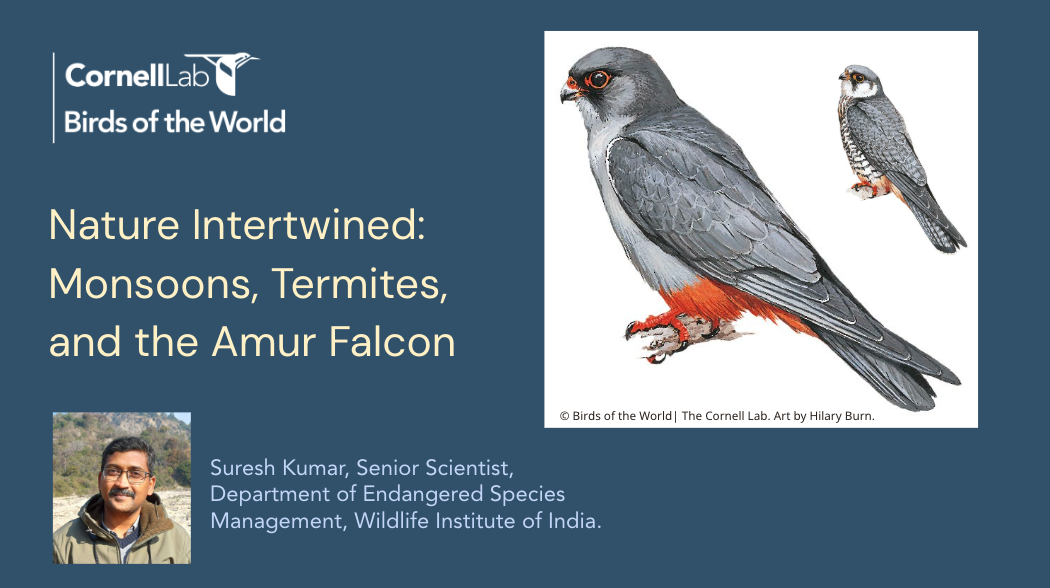Join Birds of the World Team on 19 December 2024 for a special webinar featuring Dr. Suresh Kumar
Topic: Nature Intertwined: Monsoons, Termites, and the Amur Falcon
Date: Thursday, 19 December 2024
Time: 7 PM IST
Click the link here to register now!
At the onset of winter, millions of birds from northern latitudes as far away as the Arctic representing the Central Asian Flyway start to arrive in the tropical climes of the Indian subcontinent. Migrating several thousand kilometers, many of these birds, stop en route at select sites to rest or refuel or wait for the right weather conditions, especially before crossing formidable barriers like the high Himalayan mountain range. There are exceptions to this, and one such is the Amur Falcon (Falco amurensis), a small bird of prey weighing an average of 180 grams. Also, known as a transequatorial migrant, Amur Falcon arrives in the Indian region from their breeding grounds in Far East Asia, and on their autumn passage, numbering in thousands stop over for a few weeks in parts of Northeast India and thereafter continue to their nonbreeding destination in the African continent. En route to and from India and East Africa, they undertake a non-stop flight of nearly 6000 km, which includes crossing the Arabian Sea, the longest overwater flight of any bird of prey. Why undertake such long non-stop flights over a seemingly hostile environment? Further, why do they only stop over in parts of Northeast India on their autumn passage but nowhere else in India, and why is there no evidence of their return passage through India? A series of satellite tracking efforts of the Amur Falcon from Northeast India has solved part of this mystery, with monsoons and termites playing a part.
Suresh Kumar is a Senior Scientist in the Department of Endangered Species Management at the Wildlife Institute of India.
Suresh’s primary area of interest has been researching lesser-known and threatened fauna, their ecology and conservation. Over the last 28 years, he’s had the opportunity to work in different landscapes and species across India starting from the high temperate and alpine reaches of the Himalayas to the coastal and marine areas including the remote Andaman & Nicobar Islands. His seafaring experiences also took him to Antarctica, where as part of an Indian Scientific Expedition he conducted aerial surveys for marine mammals and birds. In recent times, his research focus has been on tracking fine-scale movements and migration of birds and marine turtles in the Indian region, and the role of the Indian monsoon in influencing the movements of species.
Video will appear on the BOW YouTube playlist after the event.

Note: Above details and creative shared by Birds of the World Team





Great opportunity for having some new information regarding this bird of prey
I would like join the presentation. If due to time difference here in New Jersey, if I can not be able to join, please send me the video of this interesting talk/discussion.